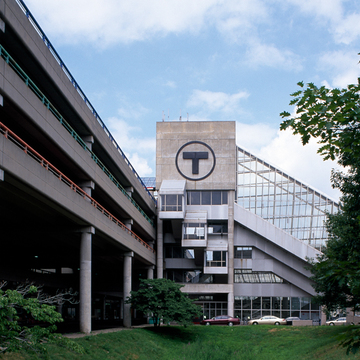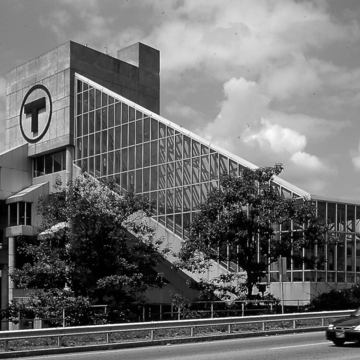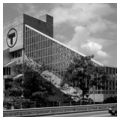The terminus of an expanded Red Line subway corridor, Alewife Station provides an intermodal transfer hub for Northwest Cambridge. Suburban commuters park in the massive garage, en route to work in the city. Initially located in an industrial no-man's land, the station facility has spurred development in this area of Cambridge. Throughout the Cambridge section of the new and restored Red Line stations, the Arts on the Line Program, created in 1978 by the Cambridge Arts Council and the MBTA, enriches the travel experience with installations making each
You are here
Alewife Station and Garage
1985, Ellenzweig Associates. Alewife Brook Pkwy. at Cambridge Park Dr.
If SAH Archipedia has been useful to you, please consider supporting it.
SAH Archipedia tells the story of the United States through its buildings, landscapes, and cities. This freely available resource empowers the public with authoritative knowledge that deepens their understanding and appreciation of the built environment. But the Society of Architectural Historians, which created SAH Archipedia with University of Virginia Press, needs your support to maintain the high-caliber research, writing, photography, cartography, editing, design, and programming that make SAH Archipedia a trusted online resource available to all who value the history of place, heritage tourism, and learning.


















